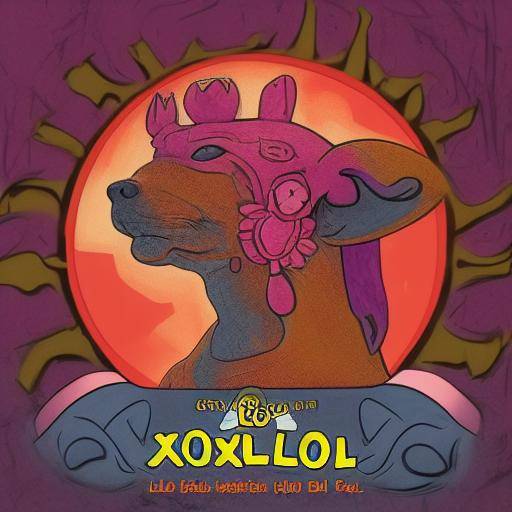
Welcome to this exciting journey to discover more about Xolotl, the underworld's guardian dog God! In this article, we will explore the fascinating history, mythology and relevance of Xolotl in Aztec culture. We will discover what makes Xolotl such an intriguing deity and what it means to the worldview of ancient Aztec civilization. In addition, we will analyze Xolotl's connections with other deities, such as his Quetzalcóatl twin, his relationship with Venus, and his role as a spiritual guide. So get ready to immerse yourself in the mythical and ancestral world of Xolotl.
Introduction to Xolotl
In Aztec mythology, Xolotl is an intriguing figure that awakens the curiosity and awe of those who explore their myths and beliefs. Considered as the constant companion of Quetzalcóatl, Xolotl stands out as a multifaceted deity with roles both in creation and in life after death. We will explore the meaning of his canine form and his relationship with the underworld, as well as his role in Aztec mythology.
History and Background of Xolotl
Xolotl's history and history date back to the first myths of Aztec civilization. From its first performances to its evolution over time, we will examine how Xolotl has maintained its relevance in the pantheon of Aztec deities. We will also explore their attributes, family relationships and their role in the creation of man.
The Role of Xolotl as Spiritual Guide
Xolotl is not only known as the dog god, but also as a spiritual guide, accompanying souls on their journey to the underworld. We will analyze the significance and importance of this role in the Aztec cosmovision, as well as the connection with the notion of death and rebirth in Mesoamerican mythology.
The Relationship of Xolotl to Venus
Venus, the brilliant planet visible in the night sky, awakes the interest of many ancient cultures, including the Aztecs. We will explore the relationship between Xolotl and Venus, and how this association influenced the Aztec cosmovision and the practices related to the calendar.
Xolotl in Comparison with Other Deities
We will compare Xolotl to other deities, such as Quetzalcóatl, to highlight their differences and similarities in roles, representations and attributes. We will analyze how these comparisons influence the understanding of Aztec mythology and the cosmovision of its followers.
Benefits of Connecting with Xolotl and Spiritual Guide
Understanding the importance of connecting with Xolotl from the perspective of the spiritual guide can be a way to achieve self-knowledge and wisdom. We will explore the benefits and challenges of this connection and how it can influence everyday life and personal spirituality.
Conclusions and FAQs
In short, Xolotl, the guardian dog God of the underworld, emerges as a central figure in Aztec mythology, with multiple dimensions ranging from the creation of the world to the spiritual guide on the journey beyond earthly life. As we explore its history, its relationship with Venus and its role as a spiritual guide, we immerse ourselves in a world full of deep symbolisms and meanings that continue to resonate today.
Frequently asked questions
1. What is the relationship between Xolotl and Quetzalcóatl?
The connection between Xolotl and Quetzalcóatl dates back to the myths of creation, where they are represented as twins. Quetzalcóatl is considered the highest deity, while Xolotl descends to the underworld to guide souls. This relationship symbolizes the duality of life and death in Aztec mythology.
2. How is Xolotl associated with Venus?
The Aztecs associated the shine and cycle of Venus with the figure of Xolotl, which manifested itself as the star of the afternoon and the morning. This connection with Venus influenced mythology and Aztec calendar, marking significant moments in daily life and ceremonial practices.
3. What is the role of Xolotl as a spiritual guide?
Xolotl descends to the underworld as a companion to the dead souls, providing protection and guidance in their transit. His role as a spiritual guide symbolizes transcendence and transformation in Aztec cosmology, providing comfort in the process of death.
4. What is the importance of Xolotl in the Aztec cosmovision?
Xolotl represents the duality of life and death, as well as the connection between heaven and the underworld. His presence in Aztec mythology influences the understanding of human existence and the meaning of death as an integral part of the cycle of life.
5. How does the connection with Xolotl manifest today?
The figure of Xolotl remains relevant in the folklore and spirituality of the communities that preserve the Aztec traditions. Its figure has been claimed as a symbol of resistance and preservation of indigenous identity.
6. What lessons can we learn from Xolotl mythology?
Xolotl mythology invites us to reflect on the duality of human existence and the importance of transcending the limits of earthly life. His teachings on death, transformation and spiritual protection offer a profound perspective on human nature.
With this, we concluded our fascinating journey through the mythology of Xolotl, the guardian dog God of the underworld. We hope that this journey has been enriching and revealing, providing a deeper understanding of the Aztec cosmovision and its rich mythological tradition. May the figure of Xolotl continue to inspire curiosity and reflection in future generations.
